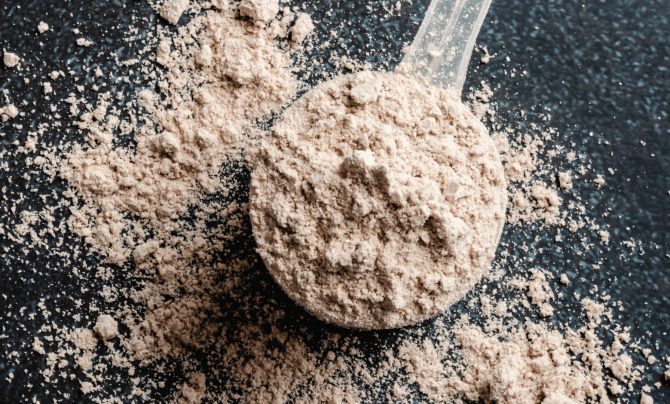Is all protein made equally? And, why are there so many different forms of whey protein?
I thought I knew the answers to these questions, but when I formulated all of the products for Ladder, I quickly learned that there’s a dark side of the supplement industry that has nothing to do with illegal ingredients or dangerous products.
In many cases, the “good” supplements you take might not be giving your body what you think. That’s because different types of whey proteins might make a difference in absorption.
And, more importantly, the number of loopholes on supplement labeling makes it almost too easy for supplement companies to lie about what’s on the label.
In the last 10 years, research shows that health officials have issued almost 800 warnings to dietary supplements containing dangerous ingredients. And, in nearly every case (98%), the USDA found that the ingredients in question were nowhere on the label.
If you want to make sure the label you’re reading is accurate, make sure you’re taking a product that has a third-party certification. Good options include NSF Certified for Sport, Informed Sport, and BSCG.
If there’s no third-party certification, just know that means no one has validated that what is says on the label is actually in the product.
Beyond smoke and mirrors on your protein label, here’s what you need to know about choosing between different protein powders and how to find the best whey protein for your needs and hard-earned money.
What is Whey Protein?
Whey protein is considered the gold standard protein for a few simple reasons: it’s high in protein per serving, lower in carbs and fat, and is loaded with all of the essential amino acids and high levels of the BCAAs. And, its absorption is very high, meaning your body can put that protein to work to help with muscle growth and recovery.
That doesn’t mean whey is your only protein option or that others aren’t good substitutes. After all, whey is dairy-based. So, if you have a dairy allergy, it could be an issue. If you’re just lactose intolerant (as you’ll find out), some whey options might not cause any issue.
But, if you’re looking for a convenient, affordable way to add more protein to your diet, whey protein is one of the best options you’ll find.
How Is Whey Protein Made?
Whey comes from milk and is a byproduct of the cheese-making process. When you turn a gallon of milk into a block of cheese, you add enzymes to the liquid. This causes the liquid to separate into liquid and curds. The leftover liquid is pure protein, which becomes whey.https://www.youtube.com/embed/u5LSzkdl-ok?version=3&rel=1&showsearch=0&showinfo=1&iv_load_policy=1&fs=1&hl=en-US&autohide=2&wmode=transparent
Understanding how whey is made will help you make sense of why there are different types of whey, such as whey protein concentrate, whey protein isolate, and whey protein hydrolysate.
The more you process and filtrate the product, the more it makes little changes to the final version of the whey.
You’ll hear a lot of different benefits (and see that some proteins are more expensive), but most of it is just marketing hype.

